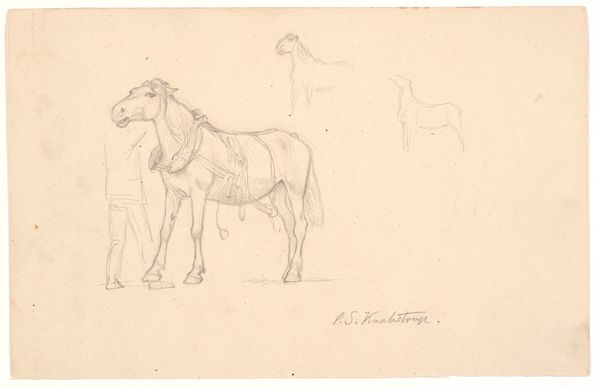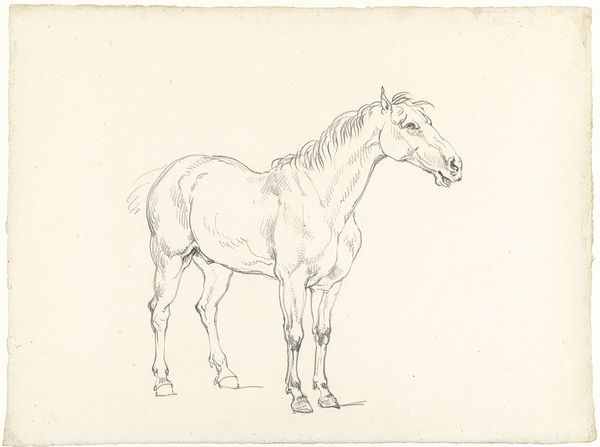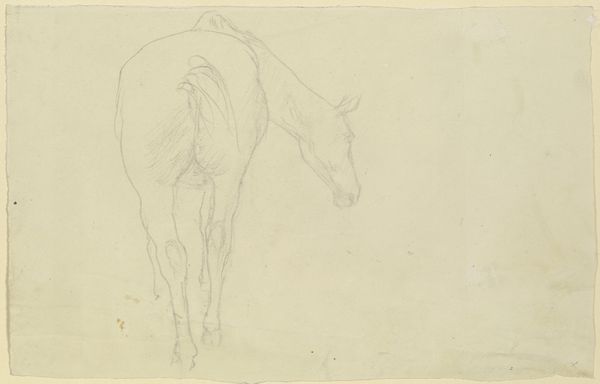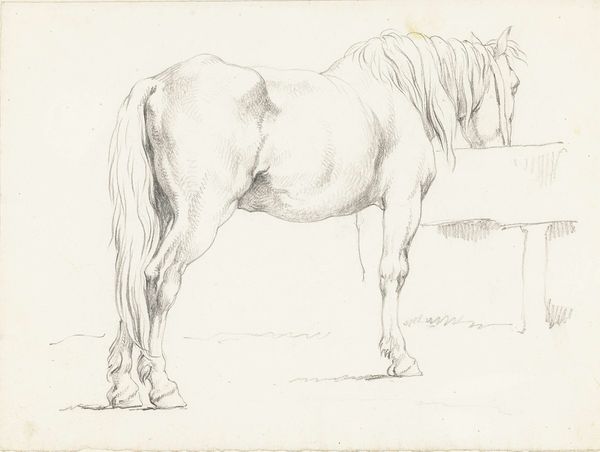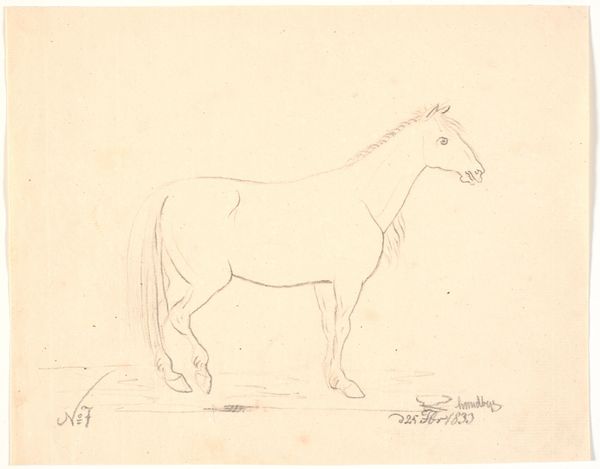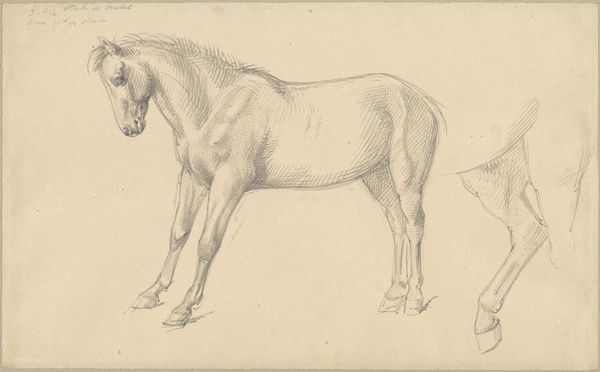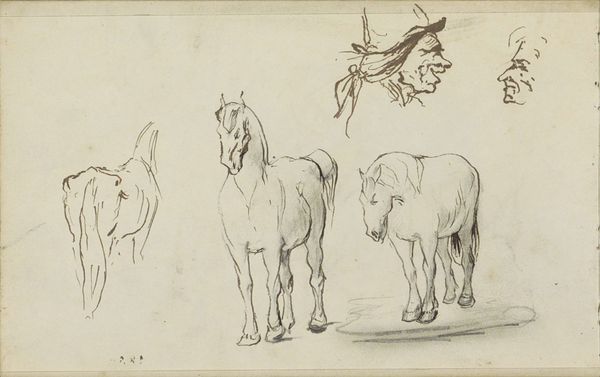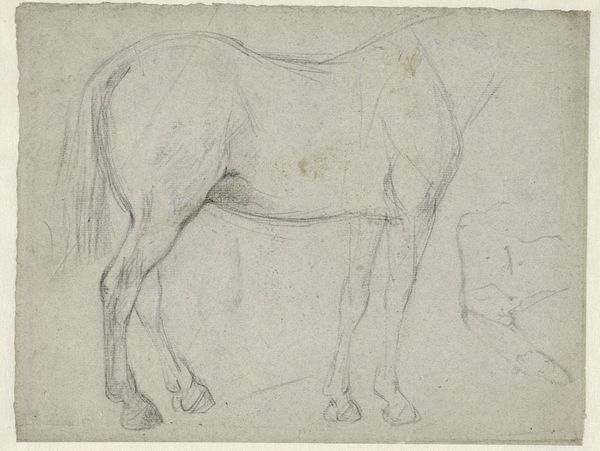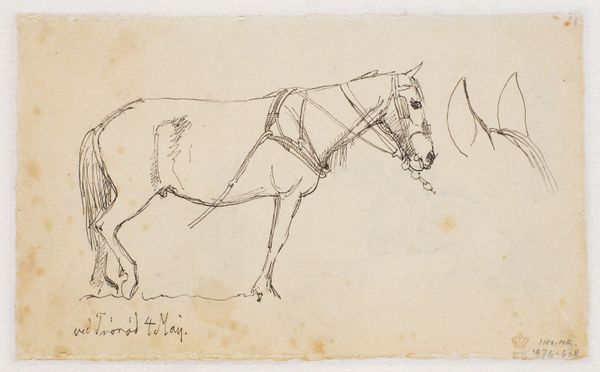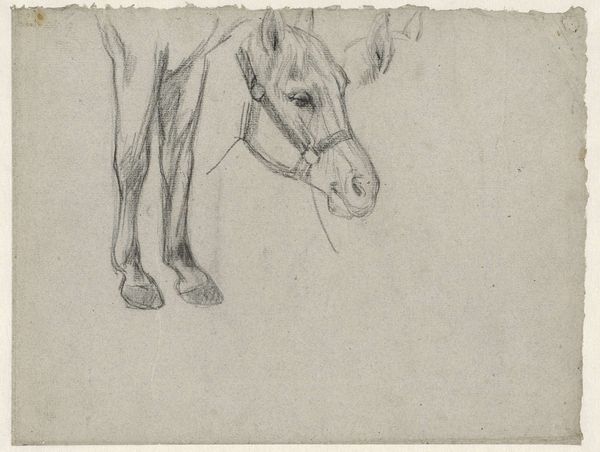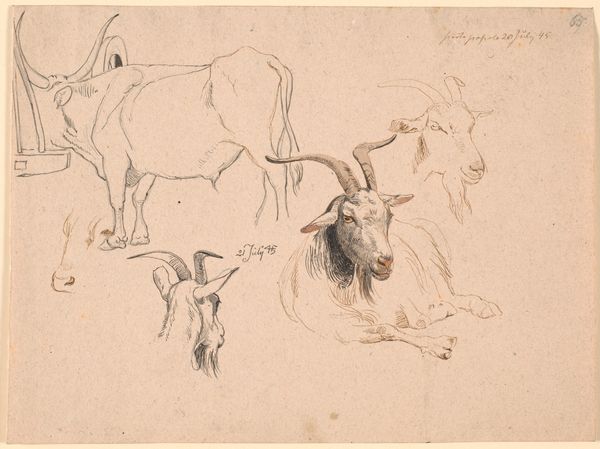
drawing, pencil
#
portrait
#
drawing
#
animal
#
landscape
#
figuration
#
pencil
#
realism
Dimensions: 144 mm (height) x 178 mm (width) (bladmaal)
Curator: Welcome. Let's turn our attention to Johan Thomas Lundbye’s drawing from 1846, "En hest strigles," housed right here at the SMK. It's rendered in pencil. Editor: It's a beautifully understated scene. There’s a certain…tenderness, maybe? The soft shading gives the horse and the groom such a quiet, almost stoic presence. Curator: Indeed. Lundbye was deeply interested in portraying rural life, particularly the lives of those connected to the land. Drawings like these served almost as studies, precursors to larger paintings where he aimed to capture the essence of the Danish countryside and its inhabitants. He was committed to a version of Realism. Editor: I’m particularly drawn to how Lundbye details the labor involved – the groom’s posture, the curve of his back as he works on the horse's legs. It’s about the physicality of the task, but it also feels like an exploration of the material relationship between humans and animals. The pencil itself almost becomes like the brush, carefully tending to the details of mane, muscle, and fabric. Curator: Absolutely. And consider the date – 1846. This comes at a time when ideas of national identity and the idealization of the rural were gaining momentum across Europe. Lundbye was very aware of contributing to the creation of a Danish cultural identity. Editor: You can really see that in how he focuses on the relationship: labor, animal, land. Pencil drawings often get categorized as preparatory, but here the medium feels crucial, lending itself to this intimacy and attention to craft that’s often overlooked in discussions of art. Curator: A really fascinating thing about this piece is, despite its seemingly simple subject, it operates within a network of societal values and historical moment, where artistic and cultural institutions worked in tandem to construct national narratives. Editor: Precisely. It's that intertwining of the immediate sensory experience and its wider implications that makes this piece, even in its humble materials, so very compelling. I find that focus on material conditions so insightful, especially considering its history and cultural context. Curator: A beautiful note on which to end. Thank you. Editor: Thank you.
Comments
No comments
Be the first to comment and join the conversation on the ultimate creative platform.

